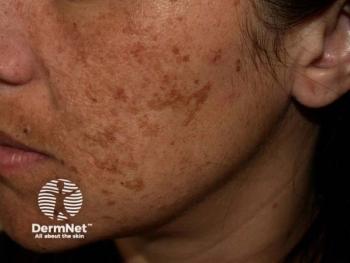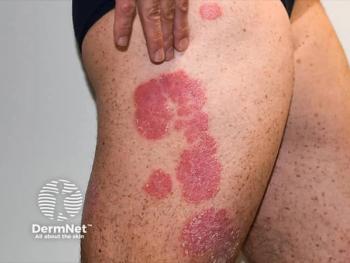
New AI Model Aids Early cSCC Risk Stratification
Key Takeaways
- CSCC is common, with 2% metastasizing, posing significant clinical challenges in early high-risk patient identification.
- CNNs showed high accuracy in detecting histopathological features, enhancing traditional assessments for CSCC metastasis prediction.
Artificial Intelligence (AI) enhances early detection of high-risk cutaneous squamous cell carcinoma (cSCC) by integrating advanced histopathological assessments for improved patient outcomes.
Cutaneous squamous cell carcinoma (cSCC) is the second most common form of skin cancer globally, and although most cases have favorable prognoses following surgical excision, approximately 2% metastasize, leading to significant morbidity and mortality.1-2 Early identification of patients at high risk for metastatic progression remains a clinical challenge. Current staging systems—although useful—lack precision, with positive predictive values for metastasis as low as 13.2%.3 A recent study published in Experimental Dermatology explored whether artificial intelligence (AI)—specifically, convolutional neural networks (CNNs)—can enhance early detection of high-risk cSCC by complementing traditional histopathological assessments.4
“We demonstrated an evaluation of a multistep CNN algorithm to derive detailed histopathological variables that were complementary to the manually scored variables by a dermatopathologist,” the researchers concluded. “The findings of this study enabled a vision of future work involving multicentre image data and data-driven approaches for image variables that are predictive toward the identification of high-risk cSCC patients.”
Methods
This nested case–control study used data from a nationwide Dutch cohort of patients diagnosed with primary cSCC between 2007 and 2008, following them for metastasis through 2018. In total, 374 tumors (187 metastatic cases and 187 controls) were included, and digital hematoxylin and eosin whole slide images (WSIs) were analyzed. A multistep CNN model was developed and trained on 142 WSIs, with 244 WSIs reserved for evaluation. The model aimed to extract continuous histopathological features, such as tumor area, keratinization, peritumoral immune infiltration, and nuclei density—variables that are typically scored categorically and subjectively by dermatopathologists.
Results
The CNN model performed well in detecting and segmenting key histopathological features, including cSCC tissue, keratinization, and peritumoral infiltration, with median accuracy metrics above 90%. Nerve structures, mitoses, and tumor-infiltrating lymphocytes were excluded from final analysis due to lower segmentation accuracy. Importantly, human validation demonstrated low interrater variability among dermatopathologists for most features, confirming reliability.
Three multivariable logistic regression models were constructed: 1 based on dermatologist-scored variables, 1 using CNN-derived variables, and 1 combining both. The combined model achieved the highest predictive performance with a concordance index of 0.92 vs 0.90 for the dermatologist-only model and 0.85 for the AI-only model. In this combined model, significant predictors of metastasis included scored tumor diameter and differentiation grade, alongside model-derived tumor area and nuclei density.
The study found strong correlations between certain CNN-derived variables and their manually scored counterparts, such as tumor area correlating with Breslow thickness and tumor diameter, and nuclei density aligning with tumor differentiation grade. However, discrepancies emerged in keratinization measures, suggesting room for refinement in translating continuous AI-derived data into meaningful clinical categories.
Discussion
This investigation provides compelling evidence that AI can serve as an objective adjunct to traditional pathology, offering refined and reproducible metrics. Although CNN-derived variables alone performed well, their integration with dermatopathologist assessments yielded the most robust predictive power. These findings may lead to more precise patient stratification and better-informed surveillance or adjuvant treatment decisions.
Limitations of the study include the use of data from a single center for CNN development, which may limit generalizability. Additionally, certain histological features could not be reliably extracted due to insufficient training data. Nonetheless, the framework presented lays a strong foundation for future multicenter AI applications in digital pathology.
Conclusion
Researchers found that integrating AI-derived quantitative histopathological features with traditional dermatopathologist assessments enhances the identification of patients with high-risk cSCC. As digital pathology and machine learning technologies evolve, such collaborative models may become integral to precision oncology workflows. They suggested future work should focus on expanding training data sets, incorporating diverse imaging platforms, and exploring AI-discovered biomarkers not currently used in staging systems.
References
- Que SKT, Zwald FO, Schmults CD. Cutaneous squamous cell carcinoma: incidence, risk factors, diagnosis, and staging. J Am Acad Dermatol. 2018;78(2):237-247. doi:10.1016/j.jaad.2017.08.059
- Tokez S, Wakkee M, Kan W, et al. Cumulative incidence and disease-specific survival of metastatic cutaneous squamous cell carcinoma: a nationwide cancer registry study. J Am Acad Dermatol. 2022;86(2):331-338. doi:10.1016/j.jaad.2021.09.067
- Venables ZC, Tokez S, Hollestein LM, et al. Validation of four cutaneous squamous cell carcinoma staging systems using nationwide data. Br J Dermatol. 2022;186(5):835-842. doi:10.1111/bjd.20909
- Bramer EM, Chia C, Rentroia-Pacheco B, et al. Enhancing early detection of metastatic cutaneous squamous cell carcinoma (CSCC): integrating AI with histopathological assessments. Exp Dermatol. 2025;34(7):e70135. doi:10.1111/exd.70135
Newsletter
Like what you’re reading? Subscribe to Dermatology Times for weekly updates on therapies, innovations, and real-world practice tips.


















